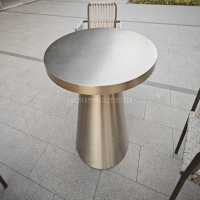Welcome to the website for landscape facilities products and knowledge.
What are the options for adding built-in environmental monitoring sensors?
In today's interconnected world, the integration of built-in environmental monitoring sensors has become crucial across various applications, from smart homes to industrial facilities. These sophisticated sensors provide real-time data about our surroundings, enabling better decision-making and automated responses to environmental changes.
The primary options for incorporating built-in environmental monitoring sensors include integrated circuit-based sensors, modular sensor arrays, and customized sensor packages. Integrated circuit sensors typically combine multiple environmental parameters into single-chip solutions, measuring temperature, humidity, atmospheric pressure, and air quality simultaneously. These compact solutions are ideal for space-constrained applications like mobile devices and compact IoT gadgets.
For more comprehensive monitoring, modular sensor arrays offer greater flexibility. These systems allow building managers and IoT developers to mix and match different sensor types according to specific requirements. A typical modular array might include particulate matter sensors for detecting PM2.5 and PM10, volatile organic compound sensors for air quality assessment, carbon dioxide sensors for indoor air quality monitoring, and ultraviolet radiation sensors for outdoor applications. The modular approach enables scalable solutions that can grow with changing needs.
Another significant option involves customized sensor packages designed for specific industries. In healthcare facilities, for instance, built-in environmental monitoring systems might prioritize precise temperature and humidity control alongside airborne pathogen detection. In agricultural settings, these systems typically focus on soil moisture, ambient temperature, and light intensity monitoring. Industrial applications often require robust sensors capable of measuring hazardous gas levels, vibration, and noise pollution alongside traditional environmental parameters.
The implementation methods vary significantly based on application requirements. Direct integration into existing hardware platforms provides the most seamless solution, particularly for new product development. Middleware solutions offer an alternative approach, acting as bridges between standalone sensors and monitoring systems. Cloud-connected sensor networks represent the most advanced option, enabling centralized monitoring of multiple locations through wireless connectivity.
When selecting built-in environmental monitoring sensors, several factors demand consideration. Accuracy and calibration requirements vary dramatically between different use cases – while residential applications might tolerate minor deviations, laboratory and industrial settings require precision-grade sensors. Power consumption represents another critical consideration, particularly for battery-operated devices. Sensor placement and environmental exposure also significantly impact performance and longevity.
Emerging technologies continue to expand the possibilities for built-in environmental monitoring. Advanced nanomaterials enable more sensitive and selective detection of environmental parameters. Machine learning algorithms enhance sensor accuracy by compensating for drift and cross-sensitivities. Energy harvesting technologies promise self-powered sensor systems that can operate indefinitely without battery replacement.
The future of built-in environmental monitoring points toward increasingly intelligent and interconnected systems. Next-generation sensors will likely incorporate artificial intelligence for predictive analytics and autonomous response capabilities. Standardization efforts aim to ensure interoperability between different manufacturers' sensors, while privacy-preserving data handling becomes increasingly important in sensitive environments.
Ultimately, the choice of built-in environmental monitoring solution depends on specific application requirements, budget constraints, and scalability needs. From simple temperature-humidity sensors to comprehensive environmental monitoring platforms, the available options continue to evolve, offering increasingly sophisticated ways to understand and respond to our environment.
Related search:

Recommendation
Outdoor Metal Table - Classic Outdoor Furniture, Stainless Steel Table, Durable and Reliable